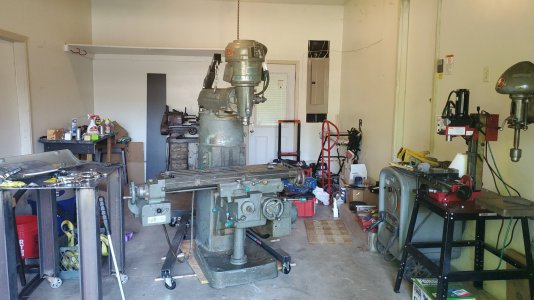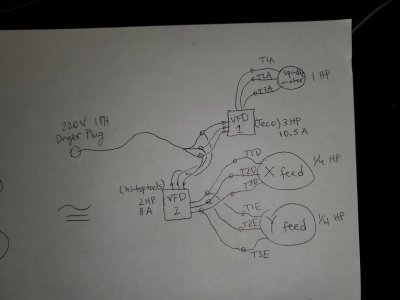- Joined
- Feb 4, 2021
- Messages
- 39
Many thanks, I'll probably try to take small cuts - though I have to realign what "small" means on a 2300 lbs. knee mill, vs. using a 130 lbs. bench top mill. I'm used to 10 thou cuts, small now probably means 0.050" or 0.100", at least based on HP-usage numbers. I'm used to spending several weekends making one small thing, so I'll try not to lose that attitude entirely.Glad you got it going. Since I'm green with machining I error on the side of caution and make small cuts. I have no idea what it's capable of, I just know compared to the BP I've seen it appears to have more mass. I will have to check on the largest collet I have, I believe it is over an inch. I think I played with a 3/4" mill, I can double check that. I hate breaking things, parts aren't overly easy to find or cheap. Since I'm not production I figure the time it takes to make extra passes is much less than repair time and for me not worth the risk.
Edit, the picture says 1 1/4". I will double check.
I saw your post looking for collets after my last reply. I found some in eBay half way reasonable awhile back. I found a MT2 adapter since I have some MT2 drill bits that also fit the tail stock of my lathe. Luckily mine came with a small selection.
Hopefully someone else can give more information. I look forward to learning more.
Nice tooling setup too! I have to make mine look better, right now just a few stray collets strewn about. I recently splurged for a monoset to BS-9 adapter and will probably just try to find the random odd sizes I need in BS-9 taper now. Would be cool to keep the rigidity that comes with only one collet and no adapters, but we have to forgo that for anything smaller than 1/2" anyway so nothing new.




